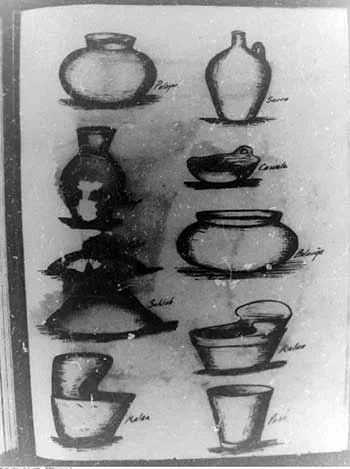The State of the Pottery Industry in Pallocan, Batangas in 1917
[In this article: Henry Otley–Beyer Collection, Philippine pottery, Batangas–pottery, pot–making in Batangas, Barrio Pallocan]
A 1917 ethnographic paper1 written by one Aurelio P. Arguelles gave an honest if not very flattering assessment of the state of the pottery industry in the barrio of Palyocan (Arguelles’ spelling) in the then–town of Batangas. Although pottery–making had been practiced for “many years,” Arguelles wrote, the end products did not “compare favorably with those made elsewhere.”
He further noted that the pots which the artisans in Palyocan created were “very odd, unattractive figures, and at the same time wanting of any semblance of taste and art.” He added, however, that the industry in Palyocan was “yet in its infancy.”
Indeed, subsequent archeological excavations in Calatagan showed the presence of numerous pre–Hispanic locally manufactured earthenware, an industry of which Angelo G. Bernardino in a paper conjectured might have arisen because of the “inability of imported wares to supply the demand or it might have been the case of earthenware having a distinct function from porcelains and stoneware or the value of imported wares might have necessitated a supply of cheaper ones2.”
Arguelles noted that the growth and development of the pottery industry in Palyocan had been “very slow as can be very well seen in the output of the last several years.” He added, however, the an increase in demand for pottery and the influx of similar products from other pottery districts in the Philippines as well as Japan and China posed challenges for the development of the industry in the barrio.
The potters of Palyocan, Arguelles wrote, used “sticky clay which is generally obtained from the lowlands beside the Calumpang River.” It was grayish in color and alluvial in nature, i.e. eroded soil or sediment “reshaped by water in some form and re–deposited in a non–marine setting3.” It had been deposited on the banks of the river by the frequent overflow of its waters.
The methods employed to mold, shape, harden and dry the pots was “simple and primitive” according to Arguelles. He described the process:
“First of all, the clay is molded until it is rendered very sticky and refined. This is done on any convenient place with a smooth surface, usually on a wooden table. This completed, the clay is divided into portions, much of which is enough to be made into one complete pot. These pots vary in size and kind. Then the shaping of the clay into pots is done. It is fixed on the revolving table for here the shaping with the view of getting symmetry for the pot is better obtained. Sometimes, decorations are carved on the outside of the pots.
When the clay is already molded and shaped into pots, these are allowed to dry in a dark corner of the barn or house where the temperature is low and the atmosphere to some degree is humid. They are allowed to stay there for a day or so and when they are almost dry, they are taken and given the finishing touches by polishing and smoothening the outer surface, that they may give a very shiny appearance. Hard woods with very smooth surfaces are employed in this part of the process.”
This done, the pots were arranged “among layers of bamboo fuel to be burned.” Arguelles referred to this process as a “beautiful spectacle” which could last “for an hour or two.” He did say that this process was both “wasteful and uneconomical” and that the local potters would be better served by using modern kilns.
The potters created “dozens of types of pots” depending on their shapes and uses. These could be dishes, frying pans, flower pots or stoves all made the same way but shaped and styled differently.
In conclusion, Arguelles wrote that while the pots made in Palyocan had an “absence in taste” and that the potters could probably benefit from more technical know–how, neighboring towns and provinces were all supplied with pots manufactured in Batangas. Because these markets were “promising” and the demand for pottery products was rising, he also expressed hope that there would be improvements in the methods of making pots in the barrio of Palyocan.
2 “A Reconstruction of 15th Century Calatagan Community,” by Angelo G. Bernardo.
3 “Alluvium,” Wikipedia.



